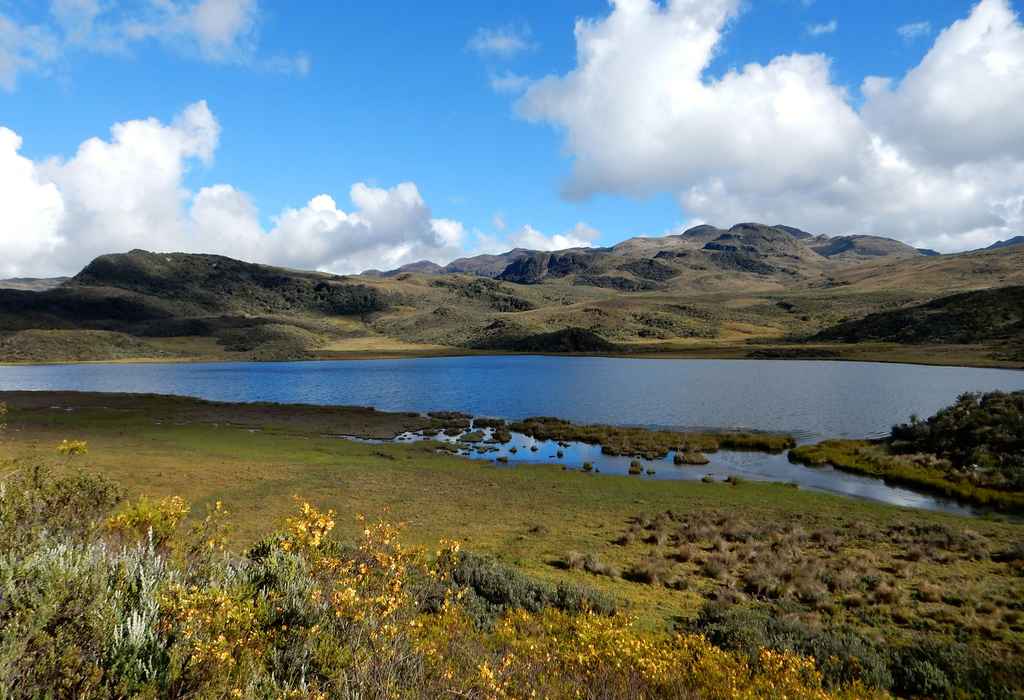Dr. R.F. (Richard) Ott
- Science Park 904
- Room number: C3.232
-
Postbus 94240
1090 GE Amsterdam
-
Research interests
I am an Earth Scientist whose research aims to better understand the interactions and feedbacks between the tectonic, climatic, anthropogenic, and biological processes that shape topography. My research focuses on the evolution of erosional landscapes and how geomorphic archives can be used to reconstruct and predict past and future landscape dynamics. In addition to being fundamental to address the sustainability challenges of the 21st century, quantifying Earth surface processes is important because they influence the flux and routing of surface water, sediment, nutrients, and organic matter; affect feedbacks between the solid earth and atmosphere; and drive the evolution and diversification of species. My research interests lie at the crossroads between process‐based geomorphology, physical geography, active tectonics, geochemistry, and natural hazards. My work brings together field observations, isotope-proxies, remote sensing, and numerical modelling. In particular, I am an expert in the application of cosmogenic nuclide geochemistry for the quantification of erosion rates on centennial and millennial time scales. Below I list several projects that I am currently working on. Feel free to get in contact, if you have any questions :)
My research mostly focuses on rivers, because river incision, sediment transport and depositon are they usually the main controls on landscape evolution. -
Research Projects
Why is Colombia one of the most biodiverse places on this planet by area? When did the Northern Andes form and how are the Andes connected to the deep dynamics of the Nazca subduction zone?
I am interested in how investigating how recent changes in geometry of the tectonic plate subducting below South America changed topography, and drove the evolution of animal and plant species in Colombia. I also investigate how subduction processes changed the drainage patterns and sediment routing systems.
Soil erosion in Lesotho (Photo: Wikimedia) Loss of fertile land due to soil erosion is a major global environmental and agricultural threat, as highlighted by the latest United Nations report. Every year, arable land equivalent to the size of Cuba is lost due to human-induced erosion, threatening food supplies and accelerating climate change due to additional CO2 release. I use geochemical techniques to quantify changes in modern soil erosion rates across landscapes with different land use histories and compare them against rates from ancient civilizations that are thought to have collapsed due to self-induced soil erosion. More recently, I also employ remote sensing and suspended sediment load measurements to compare modern and natural background erosion rates and identify the main drivers of erosional change.
Cartoon illustrating inversion of topography from river profiles, cosmogenic nuclides and thermochronology The topography of the Earth is a rich archive that can be used to reconstruct past landscapes. Changes in forcing (tectonics, climate, vegetation, etc.) can be recorded over million year time-scales. My research aims to use topography together with information from other Earth surface process proxies (erosion rates, sediment accumulation rates, etc.) to recover information about paleo-landscapes and the drivers behind landscape change.
-
Publications
2025
 Ott, R. F., Kober, F., Ivy-Ochs, S., Scherler, D., von Blanckenburg, F., Christl, M., & Vockenhuber, C. (2025). Erosion-weathering partitioning from paired-mineral and weathering-corrected cosmogenic nuclide approaches. Quaternary Science Reviews, 348, Article 109114. https://doi.org/10.1016/j.quascirev.2024.109114 [details]
Ott, R. F., Kober, F., Ivy-Ochs, S., Scherler, D., von Blanckenburg, F., Christl, M., & Vockenhuber, C. (2025). Erosion-weathering partitioning from paired-mineral and weathering-corrected cosmogenic nuclide approaches. Quaternary Science Reviews, 348, Article 109114. https://doi.org/10.1016/j.quascirev.2024.109114 [details]- Pérez-Consuegra, N., Ott, R. F., Hoke, G. D., Garcia-Delgado, H., & Sandoval, J. R. (2025). Limits of Fluvial Relief in the Northern Andes. Journal of Geophysical Research: Earth Surface, 130(3), Article e2024JF007763. https://doi.org/10.1029/2024JF007763
2024
 He, C., Braun, J., Tang, H., Yuan, X., Acevedo-Trejos, E., Ott, R. F., & Stucky de Quay, G. (2024). Drainage divide migration and implications for climate and biodiversity. Nature Reviews Earth and Environment, 5(3), 177-192. https://doi.org/10.1038/s43017-023-00511-z [details]
He, C., Braun, J., Tang, H., Yuan, X., Acevedo-Trejos, E., Ott, R. F., & Stucky de Quay, G. (2024). Drainage divide migration and implications for climate and biodiversity. Nature Reviews Earth and Environment, 5(3), 177-192. https://doi.org/10.1038/s43017-023-00511-z [details] He, C., Yang, C.-J., Turowski, J. M., Ott, R. F., Braun, J., Tang, H., Ghantous, S., Yuan, X., & Stucky De Quay, G. (2024). A global dataset of the shape of drainage systems. Earth System Science Data, 16(2), 1151-1166. https://doi.org/10.5194/essd-16-1151-2024 [details]
He, C., Yang, C.-J., Turowski, J. M., Ott, R. F., Braun, J., Tang, H., Ghantous, S., Yuan, X., & Stucky De Quay, G. (2024). A global dataset of the shape of drainage systems. Earth System Science Data, 16(2), 1151-1166. https://doi.org/10.5194/essd-16-1151-2024 [details]
2023
- Ott, R. F., Pérez-Consuegra, N., Scherler, D., Mora, A., Huppert, K. L., Braun, J., Hoke, G. D., & Sandoval Ruiz, J. R. (2023). Erosion rate maps highlight spatio-temporal patterns of uplift and quantify sediment export of the Northern Andes. Earth and Planetary Science Letters, 621, Article 118354. https://doi.org/10.1016/j.epsl.2023.118354
- Ott, R. F., Scherler, D., Wegmann, K. W., D'Arcy, M. K., Pope, R. J., Ivy-Ochs, S., Christl, M., Vockenhuber, C., & Rittenour, T. M. (2023). Paleo-denudation rates suggest variations in runoff drove aggradation during last glacial cycle, Crete, Greece. Earth Surface Processes and Landforms, 48(2), 386-405. https://doi.org/10.1002/esp.5492
- Ott, R., Gallen, S. F., & Helman, D. (2023). Erosion and weathering in carbonate regions reveal climatic and tectonic drivers of carbonate landscape evolution. Earth Surface Dynamics, 11(2), 247-257. https://doi.org/10.5194/esurf-11-247-2023
2022
- Ott, R. F., Gallen, S. F., & Granger, D. E. (2022). Cosmogenic nuclide weathering biases: corrections and potential for denudation and weathering rate measurements. Geochronology, 4(2), 455-470. https://doi.org/10.5194/gchron-4-455-2022
2021
- Bruni, E. T., Ott, R. F., Picotti, V., Haghipour, N., Wegmann, K. W., & Gallen, S. F. (2021). Stochastic alluvial fan and terrace formation triggered by a high-magnitude Holocene landslide in the Klados Gorge, Crete. Earth Surface Dynamics, 9(4), 771-793. https://doi.org/10.5194/esurf-9-771-2021
- Ott, R. F., Gailleton, B., Malatesta, L. C., Becker, L., & Braun, J. (2021). Stabilität über eine Million Jahre. System Erde, 11(2), 36-41. https://doi.org/10.48440/GFZ.syserde.11.02.6
- Ott, R. F., Wegmann, K. W., Gallen, S. F., Pazzaglia, F. J., Brandon, M. T., Ueda, K., & Fassoulas, C. (2021). Reassessing Eastern Mediterranean Tectonics and Earthquake Hazard From the 365 CE Earthquake. AGU Advances, 2(2), Article e2020AV000315. https://doi.org/10.1029/2020AV000315
- Pérez-Consuegra, N., Ott, R. F., Hoke, G. D., Galve, J. P., Pérez-Peña, V., & Mora, A. (2021). Neogene variations in slab geometry drive topographic change and drainage reorganization in the Northern Andes of Colombia. Global and Planetary Change, 206, Article 103641. https://doi.org/10.1016/j.gloplacha.2021.103641
2020
- Ott, R. F. (2020). How Lithology Impacts Global Topography, Vegetation, and Animal Biodiversity: A Global-Scale Analysis of Mountainous Regions. Geophysical Research Letters, 47(20), Article e2020GL088649. https://doi.org/10.1029/2020GL088649
2019
- Ott, R. F., Gallen, S. F., Caves Rugenstein, J. K., Ivy-Ochs, S., Helman, D., Fassoulas, C., Vockenhuber, C., Christl, M., & Willett, S. D. (2019). Chemical Versus Mechanical Denudation in Meta-Clastic and Carbonate Bedrock Catchments on Crete, Greece, and Mechanisms for Steep and High Carbonate Topography. Journal of Geophysical Research: Earth Surface, 124(12), 2943-2961. https://doi.org/10.1029/2019JF005142
- Ott, R. F., Gallen, S. F., Wegmann, K. W., Biswas, R. H., Herman, F., & Willett, S. D. (2019). Pleistocene terrace formation, Quaternary rock uplift rates and geodynamics of the Hellenic Subduction Zone revealed from dating of paleoshorelines on Crete, Greece. Earth and Planetary Science Letters, 525, Article 115757. https://doi.org/10.1016/j.epsl.2019.115757
2018
- Ott, R. F., Whipple, K. X., & van Soest, M. (2018). Incision history of the Verde Valley region and implications for uplift of the Colorado Plateau (central Arizona). Geosphere, 14(4), 1690-1709. https://doi.org/10.1130/GES01640.1
2018
- Auderset, A., Cafagna, F., Echeverria Pazos, L., Elison, P., Erlanger, E., Fomin, I., Guitián, J., Hawemann, F., Kueter, N., Mandl, M., Mejía, L. M., Moretti, S., Oestreicher, N. K., Ott, R., Paneva, N., Petschnig, P., Preuss, S., Reitano, R., Renz, T., ... Zhang, H. (2018). Colombia: Doctoral Excursion, Earth Sciences Department ETH Zurich, August 21 – September 5, 2018. In Colombia: Doctoral Excursion, Earth Sciences Department ETH Zurich, August 21 – September 5, 2018 ETH Zurich. https://doi.org/10.3929/ethz-b-000327761
2017
- Balashova, A., Beaussier, S., Blattmann, T., de Palézieux, L., Fiedrich, A., Fomin, I., Hsu, Y.-J., Erlanger, E., Küter, N., Mandl, M., Manjon Cabeza Cordoba, A., Ott, R. F., Sliwinski, J., Sookdeo, A., Storck, J.-C., Troch, J., Wenning, Q., & Winterberg, S. (2017). Taiwan: Taiwan PhD Excursion, Earth Sciences Department ETH Zurich, 9–22 February 2017. In Taiwan: Taiwan PhD Excursion, Earth Sciences Department ETH Zurich, 9–22 February 2017 (pp. 54). ETH Zurich. https://doi.org/10.3929/ethz-b-000327601
Prize / grant
- Ott, R. & Petrignani, A. (2025). NWO ENW-XS grants for two UvA Faculty of Science researchers. https://hims.uva.nl/shared/faculteiten/en/faculteit-der-natuurwetenschappen-wiskunde-en-informatica/news/2025/05/nwo-enw-xs-grants-for-two-u…
2023
- He, C., Yang, C.-J., Turowski, J. M., Ott, R. F., Braun, J., Tang, H., Ghantous, S., Yuan, X. & Stucky de Quay, G. (2023). Basin90m, a new global drainage basin dataset. GFZ Data Services. https://doi.org/10.5880/gfz.4.6.2023.004
This list of publications is extracted from the UvA-Current Research Information System. Questions? Ask the library or the Pure staff of your faculty / institute. Log in to Pure to edit your publications. Log in to Personal Page Publication Selection tool to manage the visibility of your publications on this list. -
Ancillary activities
No ancillary activities
